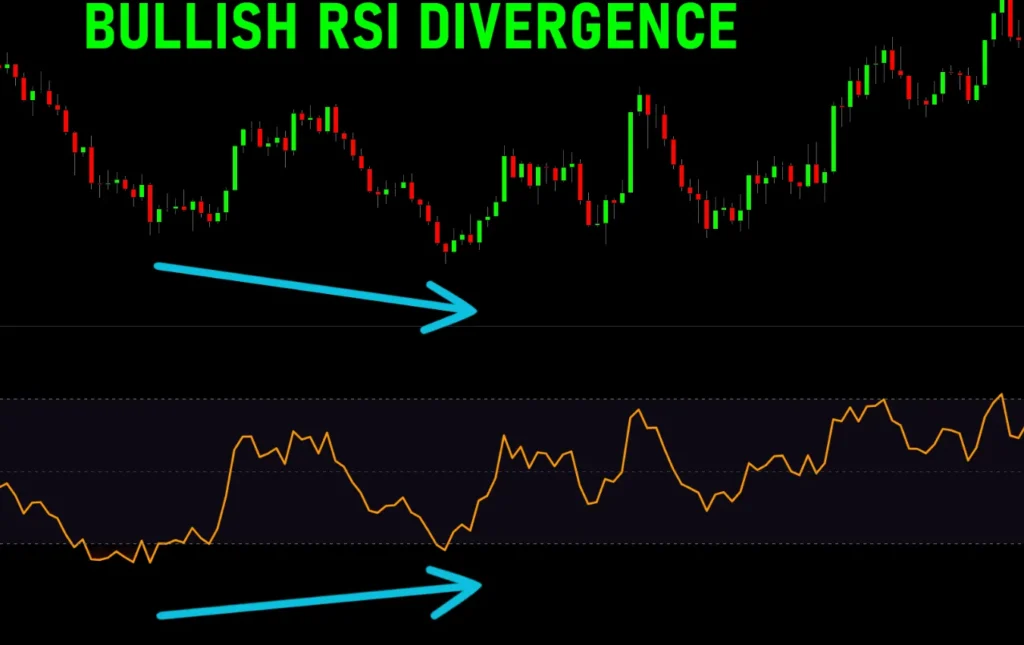Navigating market ups and downs calls for adaptable tools, and the RSI (Relative Strength Index) is a trader’s go-to for momentum analysis. Choosing the right RSI setting can be a game-changer, especially when market conditions are unpredictable. From standard settings to high-speed adjustments, discover how the top three RSI configurations can sharpen your strategies and keep you one step ahead in any market climate. Curious about how the right RSI settings can impact your trading approach? Go trader-ai.io to further enhance your investment strategy and for more in-depth knowledge about navigating these complex systems.
Contents
Standard RSI Settings: The 14-Period Setting for General Market Conditions
The 14-period RSI setting is a favorite among traders. Why? Because it offers a balanced view, suitable for a range of market conditions, and helps traders avoid unnecessary noise.
Imagine a compass on a slightly foggy day—it won’t be precise down to the last degree, but it’ll guide you well enough to reach your goal. Similarly, the 14-period RSI gives a moderate level of sensitivity, ideal for those stable, less volatile conditions when extreme movements aren’t expected.
Now, what makes the 14-period standard work well? By tracking the average gains and losses over a two-week period, it smooths out minor fluctuations while still picking up significant momentum shifts. This setting provides reliable signals for both overbought and oversold conditions, helping traders make decisions with a relatively calm market backdrop.
For instance, if the RSI climbs above 70, it could indicate an overbought situation, signaling potential for a pullback. Conversely, an RSI dropping below 30 might hint at an oversold market ripe for reversal.
For traders looking for simplicity, the 14-period RSI is a great start, particularly for markets that aren’t swinging too wildly. However, it’s worth noting that in more volatile or trending environments, this setting might not capture quick or sustained changes in direction.
Think of it as the default thermostat in your home—it’s good enough for most days, but on extreme days, a tweak might be needed. So, for those exploring highly active or slow-moving markets, adjusting from the standard may provide an edge.
Short-Term RSI Setting (7-Period): Capturing Quick Momentum in Volatile Markets
The 7-period RSI setting is like trading on high alert—it’s tuned for those rapid, dynamic markets where prices bounce up and down in short bursts. This setting is popular among day traders and short-term investors aiming to capture immediate shifts in momentum. By measuring price movement over just seven periods, it reacts quickly, picking up on even minor changes. Imagine having a radar that can detect every shift in a stormy sea—that’s the power of the 7-period RSI in capturing swift market changes.
Why use this setting? When the market is volatile, short-term settings help in identifying immediate entry and exit points. With a 7-period RSI, if the indicator hits an overbought level (above 70), it suggests the market might be ready for a quick correction.
On the flip side, an oversold signal (below 30) can indicate a quick bounce back. This setting is particularly useful for those trading in high-stakes markets like cryptocurrency, where daily price fluctuations can be intense.
One word of caution: this setting can sometimes give more false signals due to its high sensitivity. In choppy markets, the 7-period RSI may trigger frequent buy and sell signals, some of which might not lead to profitable moves. Traders should consider confirming these signals with additional indicators or using stop-loss strategies to protect against unexpected turns. It’s a bit like a caffeine-fueled sprint—powerful and fast but needing a steady hand to manage.
Long-Term RSI Setting (21-Period): Smoothing Trends in Stable or Trending Markets
For markets that move at a leisurely pace or when traders want to ride the wave of a long-term trend, the 21-period RSI setting provides a smoother experience. This setting tracks price movements over a longer timeframe, making it less susceptible to daily market noise. Picture it as a cruise control for a long road trip—it glides over minor bumps, staying focused on the bigger picture.
The 21-period RSI is particularly valuable in trending markets where the goal is to identify the overall direction and catch the wave as it unfolds. It’s an ideal setting for investors who are comfortable with slower trade responses and who prefer to track broader trends rather than immediate ups and downs.
For instance, in a stable market, when the RSI crosses above 70 or below 30, it’s often a more reliable indicator of a sustained trend shift rather than a short-term fluctuation.
Using the 21-period RSI can also help avoid the psychological pitfalls of reacting to every minor movement. Long-term trends are easier to capture without the distraction of quick fluctuations, making this setting popular among traders who focus on steady, long-term gains rather than frequent entries and exits. Just remember, like a slow and steady marathon pace, it’s built for endurance, not quick wins.
Conclusion
Finding the best RSI setting is all about tuning into the market’s rhythm. Whether aiming for rapid trades in a volatile market or steady gains in a calmer climate, these top RSI configurations provide a tailored approach. With the right setting, traders can read momentum shifts more accurately, making more informed decisions and enhancing their trading success, regardless of the market’s twists and turns.
